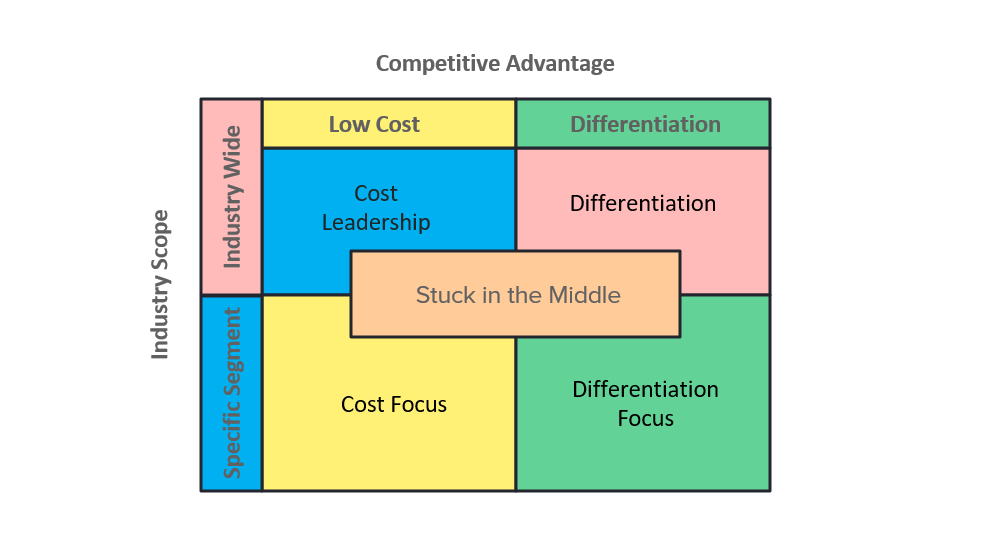Back in the early 1960s, Bruce Henderson, the founder of Boston Consulting Group, asserted that there was only one way to successfully compete – gain a relative market share advantage over all competitors so as to have lower costs than all of them. On top of it, the firm will further reduce costs due to the learning curve advantage.
In 1980, Michael Porter pointed out that there is another way to compete: differentiation. His view of two generic strategies – cost leadership and differentiation – became very popular. He was categorical, that each company, ultimately, will have to choose either cost leadership or differentiation. Any company opting for both will “get stuck in the middle “.
In 2005, W. Chan Kim and Renee Mauborgne of INSEAD, in their book, “Blue Ocean Strategy’’ came up with a completely different approach. Their main contention was that companies, while remaining in the existing business (red ocean), should also identify new uncontested markets (blue ocean). In doing so, companies will simultaneously pursue cost leadership and differentiation.

| Red Ocean Strategy VS Blue Ocean Strategy | |
| Competing in existing market space | Create uncontested market space |
| Beat the competition | Make the competition irrelevant |
| Make the value – cost trade-off | Break the value – cost trade-off |
| Align the whole system of a company’s activities with its strategic choice of differentiation or low cost | Align the whole system of a company’s activities with its strategic choice of differentiation and low cost |
Unlike many other strategy approaches, Blue Ocean Strategy comes with what and how to “do list ‘’. It not only clearly articulates the steps required, but also provides tools for each step.
Following, in brief, are steps involved in executing Blue Ocean Strategy:
There have been many examples of success of Blue Ocean Strategy like Cirque du Soleil (Canadian circus company), Marvel, Nintendo, Stich Fix in fashion retail industry, Health Media in healthcare industry etc. A notable failure was Tata Nano.

Mr. S.M. Fakih retired from a large multinational company as the head of strategy development. He teaches Strategic Management at IGTC. IGTC plans to conduct a one-day open program or can customize a program for your organization on “Business Unit Strategies – with special reference to Blue Ocean Strategy”. For details, please contact igtcdirector@indo-german.com.